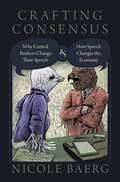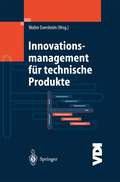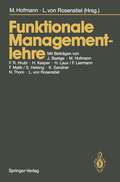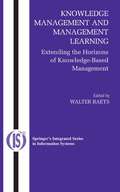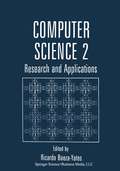- Table View
- List View
Foreign Direct Investment in Latin America: Its Changing Nature at the Turn of the Century
by Werner Baer William MilesExamine the changing nature of foreign investments in Latin America!Generously enhanced with easy-to-understand charts, tables, and graphs, this book covers the ins and outs of foreign direct investment in the established and emerging markets of Latin America. In addition to an overview of direct investment for the entire Latin American region in the 1990s, this valuable book examines specific countries&’ experiences with FDI in that decade. These include Argentina, Chile, Mexico, Brazil, Peru, Ecuador, Paraguay, Costa Rica, El Salvador, Guatemala, Honduras, and Nicaragua.Spending on environmental projects is on the rise, and Latin American nations are at the forefront of this financial whirlwind in the developing world. Foreign Direct Investment in Latin America: Its Changing Nature at the Turn of the Century examines the difficulties of assessing environmental investments. It analyzes the role of international capital in Latin-American environmental issues and discusses the major players, such as the World Bank, in international capital and the environment.Foreign Direct Investment in Latin America presents case studies that illustrate: the history of FDI in Argentina and the impact of the privatization of state-owned enterprises in 1991-1993 the similarities and differences between 1990s FDI in Mexico and Chile the ways that modern investment in Brazil differs in purpose from investment there in previous economic eras how Peru addressed its balance-of-payments crisis in a time when its domestic financial markets were thin and there existed few sources of financing besides banks how Paraguay&’s historical lack of infrastructure has hampered FDI efforts there Ecuador&’s financial and balance-of-payments crisis-its currency is in free-fall and its financial institutions are on the brink of collapse . . . and much more!Foreign Direct Investment in Latin America packs all this valuable information into a single user-friendly source. As we move into the new millennium, no student, educator, or investor interested in this quickly evolving, volatile market should be without it!
Foreign Direct Investment in Latin America: Its Changing Nature at the Turn of the Century
by Werner Baer William MilesExamine the changing nature of foreign investments in Latin America!Generously enhanced with easy-to-understand charts, tables, and graphs, this book covers the ins and outs of foreign direct investment in the established and emerging markets of Latin America. In addition to an overview of direct investment for the entire Latin American region in the 1990s, this valuable book examines specific countries&’ experiences with FDI in that decade. These include Argentina, Chile, Mexico, Brazil, Peru, Ecuador, Paraguay, Costa Rica, El Salvador, Guatemala, Honduras, and Nicaragua.Spending on environmental projects is on the rise, and Latin American nations are at the forefront of this financial whirlwind in the developing world. Foreign Direct Investment in Latin America: Its Changing Nature at the Turn of the Century examines the difficulties of assessing environmental investments. It analyzes the role of international capital in Latin-American environmental issues and discusses the major players, such as the World Bank, in international capital and the environment.Foreign Direct Investment in Latin America presents case studies that illustrate: the history of FDI in Argentina and the impact of the privatization of state-owned enterprises in 1991-1993 the similarities and differences between 1990s FDI in Mexico and Chile the ways that modern investment in Brazil differs in purpose from investment there in previous economic eras how Peru addressed its balance-of-payments crisis in a time when its domestic financial markets were thin and there existed few sources of financing besides banks how Paraguay&’s historical lack of infrastructure has hampered FDI efforts there Ecuador&’s financial and balance-of-payments crisis-its currency is in free-fall and its financial institutions are on the brink of collapse . . . and much more!Foreign Direct Investment in Latin America packs all this valuable information into a single user-friendly source. As we move into the new millennium, no student, educator, or investor interested in this quickly evolving, volatile market should be without it!
365 Ways to Save the Planet: A Day-by-day Guide to Living Sustainably (365 Series)
by Nergiz De BaereARE YOU READY TO CHANGE THE WORLD?365 WAYS TO SAVE THE PLANET is a full year's worth of daily wisdom, carefully selected to inspire you to take the urgent action our very existence desperately needs. You'll find actions and challenges, surprising facts about the climate crisis, templates for writing to political representatives, scientific explanations of important concepts, popular misconceptions about sustainability, and much more. 365 WAYS TO SAVE THE PLANET goes way beyond predictable sustainability advice about how to recycle. Here you'll discover the small stuff you can do every day to change the world. Because when you get the little things right, the big things follow.
Crafting Consensus: Why Central Bankers Change Their Speech and How Speech Changes the Economy
by Nicole BaergIn a world dependent on the constant sharing of information, central bankers increasingly communicate their policies to the mass public. Central bank communications are drafted in monetary policy committee meetings composed of policymakers with differing interests. Despite their differences, committee members must come together, write, and agree to an official policy statement. Once released to the public, central bank communications then affect citizens' actions and ultimately, the economy. But how exactly does this work? In Crafting Consensus, Nicole Baerg explains how the transparency of central bank communication depends on the configuration of committee members' preferences. Baerg argues that monetary policy committees composed of members with differing preferences over inflation are better suited to communicating precise information with the public. These diverse committees produce central bank statements of higher quality and less uncertainty than those from more homogeneous committees. Additionally, she argues that higher quality statements more effectively shape individuals' inflation expectations and move the economy in ways that policymakers intend. Baerg demonstrates that central bankers are not impartial technocrats and that their preferences and the institutional rules where they work matter for understanding the politics of monetary policy and variations in economic performance over time. Conducting empirical analysis from historical archival data, textual analysis, machine-learning, survey experiments, and cross-sectional time-series data, Crafting Consensus offers a new theory of committee decision making and a battery of empirical tests to provide a rich understanding of modern-day central banking.
Crafting Consensus: Why Central Bankers Change Their Speech and How Speech Changes the Economy
by Nicole BaergIn a world dependent on the constant sharing of information, central bankers increasingly communicate their policies to the mass public. Central bank communications are drafted in monetary policy committee meetings composed of policymakers with differing interests. Despite their differences, committee members must come together, write, and agree to an official policy statement. Once released to the public, central bank communications then affect citizens' actions and ultimately, the economy. But how exactly does this work? In Crafting Consensus, Nicole Baerg explains how the transparency of central bank communication depends on the configuration of committee members' preferences. Baerg argues that monetary policy committees composed of members with differing preferences over inflation are better suited to communicating precise information with the public. These diverse committees produce central bank statements of higher quality and less uncertainty than those from more homogeneous committees. Additionally, she argues that higher quality statements more effectively shape individuals' inflation expectations and move the economy in ways that policymakers intend. Baerg demonstrates that central bankers are not impartial technocrats and that their preferences and the institutional rules where they work matter for understanding the politics of monetary policy and variations in economic performance over time. Conducting empirical analysis from historical archival data, textual analysis, machine-learning, survey experiments, and cross-sectional time-series data, Crafting Consensus offers a new theory of committee decision making and a battery of empirical tests to provide a rich understanding of modern-day central banking.
Nurses Contributions to Quality Health Outcomes
by Marianne Baernholdt Diane K. BoyleThis comprehensive book organizes the components of quality and safety outcomes, within a framework developed by expert nurses. Such a framework is missing in existing books on quality and safety in health care, and the concepts of nursing and organizational outcomes are often overlooked. This book fills this gap by exploring and expanding the various features of the Quality Health Outcomes Model (QHOM) and its four main concepts of System, Client, Interventions, and Outcomes. Using a broad and comprehensive approach, the authors identify the most current empirical evidence and concepts in the nursing field to provide an up-to-date understanding of the QHOM’s four concepts and their interrelations. New concepts include (a) systems concepts of turbulence and complexity of workflow and use of the electronic health record to support clinical workflow; (b) client concepts of social determinants of health, health literacy, and chronicity; (c) intervention concepts of interprofessional practice, nursing care processes including unfinished care, and care coordination; (d) outcome concepts related to nursing and the organization in addition to patient outcomes that includes the patients’ experience.The ideas, approaches, and evidence are provided by a team of experienced researchers, practitioners, and leaders. The author team presents an updated, state-of-art view of how system, client, and interventions affect client, nurse, and organizational outcomes.This book will appeal to researchers, clinicians, and researchers interested in healthcare quality and in particular nurses and nursing students in administration, research, and practice.
Analytics in a Big Data World: The Essential Guide to Data Science and its Applications (Wiley and SAS Business Series)
by Bart BaesensThe guide to targeting and leveraging business opportunities using big data & analytics By leveraging big data & analytics, businesses create the potential to better understand, manage, and strategically exploiting the complex dynamics of customer behavior. Analytics in a Big Data World reveals how to tap into the powerful tool of data analytics to create a strategic advantage and identify new business opportunities. Designed to be an accessible resource, this essential book does not include exhaustive coverage of all analytical techniques, instead focusing on analytics techniques that really provide added value in business environments. The book draws on author Bart Baesens' expertise on the topics of big data, analytics and its applications in e.g. credit risk, marketing, and fraud to provide a clear roadmap for organizations that want to use data analytics to their advantage, but need a good starting point. Baesens has conducted extensive research on big data, analytics, customer relationship management, web analytics, fraud detection, and credit risk management, and uses this experience to bring clarity to a complex topic. Includes numerous case studies on risk management, fraud detection, customer relationship management, and web analytics Offers the results of research and the author's personal experience in banking, retail, and government Contains an overview of the visionary ideas and current developments on the strategic use of analytics for business Covers the topic of data analytics in easy-to-understand terms without an undo emphasis on mathematics and the minutiae of statistical analysis For organizations looking to enhance their capabilities via data analytics, this resource is the go-to reference for leveraging data to enhance business capabilities.
Analytics in a Big Data World: The Essential Guide to Data Science and its Applications (Wiley and SAS Business Series)
by Bart BaesensThe guide to targeting and leveraging business opportunities using big data & analytics By leveraging big data & analytics, businesses create the potential to better understand, manage, and strategically exploiting the complex dynamics of customer behavior. Analytics in a Big Data World reveals how to tap into the powerful tool of data analytics to create a strategic advantage and identify new business opportunities. Designed to be an accessible resource, this essential book does not include exhaustive coverage of all analytical techniques, instead focusing on analytics techniques that really provide added value in business environments. The book draws on author Bart Baesens' expertise on the topics of big data, analytics and its applications in e.g. credit risk, marketing, and fraud to provide a clear roadmap for organizations that want to use data analytics to their advantage, but need a good starting point. Baesens has conducted extensive research on big data, analytics, customer relationship management, web analytics, fraud detection, and credit risk management, and uses this experience to bring clarity to a complex topic. Includes numerous case studies on risk management, fraud detection, customer relationship management, and web analytics Offers the results of research and the author's personal experience in banking, retail, and government Contains an overview of the visionary ideas and current developments on the strategic use of analytics for business Covers the topic of data analytics in easy-to-understand terms without an undo emphasis on mathematics and the minutiae of statistical analysis For organizations looking to enhance their capabilities via data analytics, this resource is the go-to reference for leveraging data to enhance business capabilities.
Credit Risk Analytics: Measurement Techniques, Applications, and Examples in SAS (Wiley and SAS Business Series)
by Bart Baesens Daniel Roesch Harald ScheuleThe long-awaited, comprehensive guide to practical credit risk modeling Credit Risk Analytics provides a targeted training guide for risk managers looking to efficiently build or validate in-house models for credit risk management. Combining theory with practice, this book walks you through the fundamentals of credit risk management and shows you how to implement these concepts using the SAS credit risk management program, with helpful code provided. Coverage includes data analysis and preprocessing, credit scoring; PD and LGD estimation and forecasting, low default portfolios, correlation modeling and estimation, validation, implementation of prudential regulation, stress testing of existing modeling concepts, and more, to provide a one-stop tutorial and reference for credit risk analytics. The companion website offers examples of both real and simulated credit portfolio data to help you more easily implement the concepts discussed, and the expert author team provides practical insight on this real-world intersection of finance, statistics, and analytics. SAS is the preferred software for credit risk modeling due to its functionality and ability to process large amounts of data. This book shows you how to exploit the capabilities of this high-powered package to create clean, accurate credit risk management models. Understand the general concepts of credit risk management Validate and stress-test existing models Access working examples based on both real and simulated data Learn useful code for implementing and validating models in SAS Despite the high demand for in-house models, there is little comprehensive training available; practitioners are left to comb through piece-meal resources, executive training courses, and consultancies to cobble together the information they need. This book ends the search by providing a comprehensive, focused resource backed by expert guidance. Credit Risk Analytics is the reference every risk manager needs to streamline the modeling process.
Credit Risk Analytics: Measurement Techniques, Applications, and Examples in SAS (Wiley and SAS Business Series)
by Bart Baesens Daniel Roesch Harald ScheuleThe long-awaited, comprehensive guide to practical credit risk modeling Credit Risk Analytics provides a targeted training guide for risk managers looking to efficiently build or validate in-house models for credit risk management. Combining theory with practice, this book walks you through the fundamentals of credit risk management and shows you how to implement these concepts using the SAS credit risk management program, with helpful code provided. Coverage includes data analysis and preprocessing, credit scoring; PD and LGD estimation and forecasting, low default portfolios, correlation modeling and estimation, validation, implementation of prudential regulation, stress testing of existing modeling concepts, and more, to provide a one-stop tutorial and reference for credit risk analytics. The companion website offers examples of both real and simulated credit portfolio data to help you more easily implement the concepts discussed, and the expert author team provides practical insight on this real-world intersection of finance, statistics, and analytics. SAS is the preferred software for credit risk modeling due to its functionality and ability to process large amounts of data. This book shows you how to exploit the capabilities of this high-powered package to create clean, accurate credit risk management models. Understand the general concepts of credit risk management Validate and stress-test existing models Access working examples based on both real and simulated data Learn useful code for implementing and validating models in SAS Despite the high demand for in-house models, there is little comprehensive training available; practitioners are left to comb through piece-meal resources, executive training courses, and consultancies to cobble together the information they need. This book ends the search by providing a comprehensive, focused resource backed by expert guidance. Credit Risk Analytics is the reference every risk manager needs to streamline the modeling process.
Innovationsmanagement für technische Produkte: Systematische und integrierte Produktentwicklung und Produktionsplanung (VDI-Buch)
by Elke Baessler Thomas Bauernhansl Uwe Böhlke Frank Brandenburg Walter Eversheim Anne Gerhards Markus Grawatsch C. Rosier S. Schöning W. EversheimIdeen allein führen nicht zum Erfolg: Produktinnovation in der Industrie ist die Umsetzung von Know-how in neue, erfolgreiche Produkte. Diese Umsetzung ist nicht mehr allein zufallsgesteuert zu betreiben, wenn Unternehmen langfristig überleben wollen. Die systematische Planung von Innovationen ist daher für den Industriebetrieb Voraussetzung zum Erfolg, wird jedoch heute nur selten durchgehend betrieben. Dies liegt vor allem daran, dass die Methoden zur Generierung und Bewertung von Innovationsansätzen nicht ausreichend bekannt und nur selten in den Innovationsprozess eingegliedert sind. Methodisches Vorgehen zur Innovationsplanung ist daher Inhalt dieses Buches. Die systematische Integration der verfügbaren Methoden in eine ganzheitliche Innovationsplanung wird beschrieben und durch Beispiele aus der Praxis belegt und demonstriert. InnovationRoadMap, Wertanalyse, TRIZ oder Portfolio-Analyse sind nur einige der Schlagworte, die der planende Ingenieur kennen lernt und hier - in den richtigen Kontext gestellt - erläutert findet.
Funktionale Managementlehre
by J. Baetge S. Helsing M. Hofmann F. R. Hrubi H. Kasper H. Laux F. Liermann F. Malik K. Sandner N. Thom L. V. RosenstielIn diesem Lehrbuch werden von zehn Autoren aus dem gesamten deutschsprachigen Raum die Grundlagen des Funktionalen Managements dargestellt. Im einzelnen werden folgende Gebiete behandelt: 1) Kommunikationsmanagement 2) Entscheidungsmanagement 3) Planungsmanagement 4) Motivationsmanagement 5) Organisationsmanagement 6) Kontrollmanagement In diese sechs Aufgabenbereiche ist das Buch im wesentlichen gegliedert, wobei Motivation und Organisation Schwerpunkte im Buch bilden. Neu ist der interdisziplinäre Ansatz verschiedener Beiträge. Das Buch wendet sich in erster Linie an Studenten, denen ein umfassender Überblick über die verschiedenen Aspekte des Managements gegeben wird. Aber auch für den in der Praxis tätigen Manager bietet das Buch wertvolle Hinweise und Anregungen für seine Arbeit.
Betriebswirtschaftliche Systemtheorie: Regelungstheoretische Planungs-Überwachungsmodelle für Produktion, Lagerung und Absatz (Moderne Lehrtexte: Wirtschaftswissenschaften #7)
by Jörg BaetgeEmpirische Methoden zur Früherkennung von Unternehmenskrisen (Nordrhein-Westfälische Akademie der Wissenschaften)
by Jörg BaetgeGrundlagen der Wirtschafts- und Sozialkybernetik: Betriebswirtschaftliche Kontrolltheorie (Moderne Lehrtexte: Wirtschaftswissenschaften)
by Jörg BaetgeRethinking Growth: Social Intrapreneurship for Sustainable Performance (The Diversity, Leadership and Responsibility Series)
by W. Baets E. OldenboomShould we rethink growth? Is the abundance of the western world still ethical? Growth, social responsibility and sustainable development are indeed deeply entangled. This book aims to provide the reader with a transversal, holistic view on these issues, and a real understanding of corporate growth, along with its possible alternatives.
Knowledge Management and Management Learning: Extending the Horizons of Knowledge-Based Management (Integrated Series in Information Systems #9)
by Walter R. J. BaetsKnowledge Management and Management Learning: Extending the Horizons of Knowledge-Based Management examines a range of topical considerations in the field by utilizing dynamic and non-linear systems behavior or the complexity paradigm. From this examination have come a number of new and promising relevant extensions to knowledge management and its practice. Many of the topics have been pulled from "real world" situations in actual companies, and therefore these topical treatments reflect quantitative and qualitative research done within the knowledge management framework of actual company experience. Offered are a series of topical treatments that extend the parameters of knowledge management and examine the practical implications of these extensions. The book begins with an extended introduction and theoretical framework. The contributing authors have written chapters that add to both the framework and the practical consequences of knowledge management. Within this context, the book illustrates why and how of knowledge management is important for companies.
Complexity, Learning and Organizations: A Quantum Interpretation of Business
by Walter R.J. BaetsThis fascinating book argues for a new way of looking at the world and at human systems, companies or (Western) society as a whole. Walter R.J. Baets argues that we should let go of our drive to control, manage and organize, in order to be able to create an ideal environment for continuous learning, both for ourselves and for our collaborators. Arguing in favour of a holistic management approach, and very much in opposition to the short-term shareholder value driven approaches that are popular today, Baets’ book develops a logic founded in real life observations, examples and cases that every reader will recognize in their daily practice. It guides the reader to understand an alternative paradigm and allows them finally to be able to work with the dynamics of business on a daily basis. A must-read for students of complexity, strategy and organizational behaviour, this well-researched, well-argued book skilfully guides the reader through this interesting subject.
Complexity, Learning and Organizations: A Quantum Interpretation of Business
by Walter R.J. BaetsThis fascinating book argues for a new way of looking at the world and at human systems, companies or (Western) society as a whole. Walter R.J. Baets argues that we should let go of our drive to control, manage and organize, in order to be able to create an ideal environment for continuous learning, both for ourselves and for our collaborators. Arguing in favour of a holistic management approach, and very much in opposition to the short-term shareholder value driven approaches that are popular today, Baets’ book develops a logic founded in real life observations, examples and cases that every reader will recognize in their daily practice. It guides the reader to understand an alternative paradigm and allows them finally to be able to work with the dynamics of business on a daily basis. A must-read for students of complexity, strategy and organizational behaviour, this well-researched, well-argued book skilfully guides the reader through this interesting subject.
Organizational Learning and Knowledge Technologies in a Dynamic Environment
by Walter R.J. BaetsI am not a born academic. I deliberately joined the ranks of academia at a fairly late stage as a natural progression from my professional career as an executive in what in those days was known as "decision support". My career had begun in the telecom industry before the days of deregulation in what one would call strategic planning and then I moved on to decision support in the field of banking, developing trading room software and risk management systems. As I developed decision support systems for real applications, the more I realized how very dependent these systems are on decision design. I began to question a number of basic business assumptions. I felt increasingly the need to review the way decision support systems were conceived at the time since they not only limited what one could do with computers, but also limited the decision-making capacity of executives. I thus decided to take time out from my professional obligations in order to be able to investigate the 'whys and wherefores' behind decision-making. I experienced yet another disappointment at the beginning of my academic career as I noted the academic research style prevailing in most Business Schools. The academic community was adhering to a type of research methodology based on a single view of the way humans think.
Virtual Corporate Universities: A Matrix of Knowledge and Learning for the New Digital Dawn (Integrated Series in Information Systems #2)
by Walter R.J. Baets Gert van der LindenOver the past years, business schools have been experimenting with distance learning and online education. In many cases this new technology has not brought the anticipated results. Questions raised by online education can be linked to the fundamental problem of education and teaching, and more specifically to the models and philosophy of education and teaching. Virtual Corporate Universities: A Matrix of Knowledge and Learning for the New Digital Dawn offers a source for new thoughts about those processes in view of the use of new technologies. Learning is considered as a key-strategic tool for new strategies, innovation, and significantly improving organizational effectiveness. The book blends the elements of knowledge management, as well as organizational and individual learning. The book is not just a treatment of technology, but a fusion of a novel dynamic learner (student)-driven learning concept, the management and creation of dynamic knowledge, and next-generation technologies to generic business, organizational and managerial processes, and the development of human capital. Obviously, the implications of online learning go far beyond the field of business as presented in this book.
Contacts, Collisions and Relationships: Britons and Chileans in the Independence era, 1806-1831 (Liverpool Latin American Studies #19)
by Andrés Baeza RuzThis is a study of the relations between Britain and Chile during the Spanish American independence era (1806–1831). These relations were characterised by a dynamic, unpredictable, and changing nature, imperialism being only one and not the exclusive way to define them. The book explores how Britons and Chileans perceived each other from the perspective of cultural history, considering the consequences of these ‘cultural encounters’ for the subsequent nation–state building process in Chile. From 1806 to 1831 both British and Chilean ‘state’ and ‘non–state’ actors interacted across several different ‘contact zones’, and thereby configured this relationship in multiple ways. Although the extensive presence of ‘non–state’ actors (missionaries, seamen, educators and merchants) was a manifestation of the ‘expansion’ of British interests to Chile, they were not necessarily an expression of any British imperial policy. There were multiple attitudes, perceptions, representations and discourses by Chileans on the role played by Britain in the world, which changed depending on the circumstances. Likewise, for Britons, Chile was represented in multiple ways, the image of Chile acting as a pathway to other markets and destinations being the most remarkable. All these had repercussions in the early nation–building process in Chile.
Computer Science 2: Research and Applications (pdf) (The\language Of Science Ser. #96)
by Ricardo Baeza-YatesRecent Advances in Applied Probability
by Ricardo Baeza-Yates Joseph Glaz Henryk Gzyl Jürg Hüsler José Luis PalaciosApplied probability is a broad research area that is of interest to scientists in diverse disciplines in science and technology, including: anthropology, biology, communication theory, economics, epidemiology, finance, geography, linguistics, medicine, meteorology, operations research, psychology, quality control, sociology, and statistics. Recent Advances in Applied Probability is a collection of survey articles that bring together the work of leading researchers in applied probability to present current research advances in this important area. This volume will be of interest to graduate students and researchers whose research is closely connected to probability modelling and their applications. It is suitable for one semester graduate level research seminar in applied probability.


